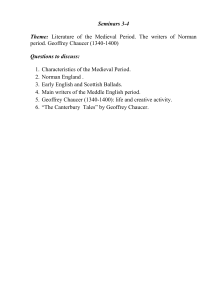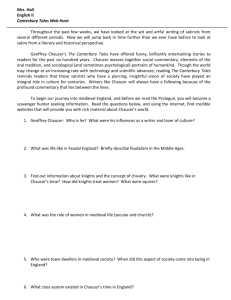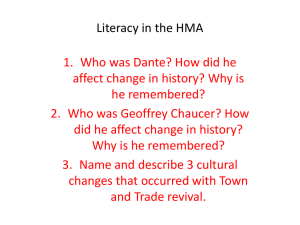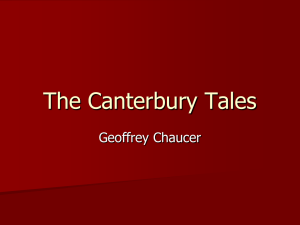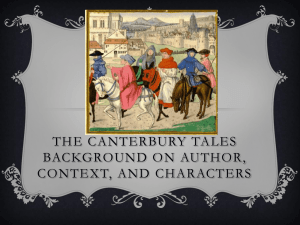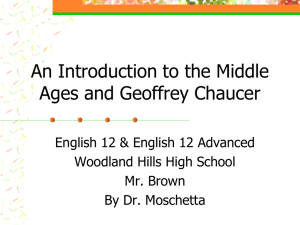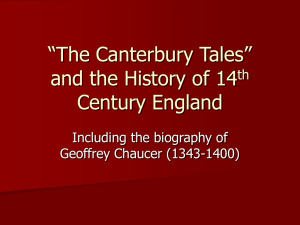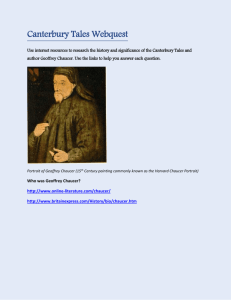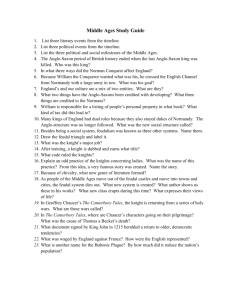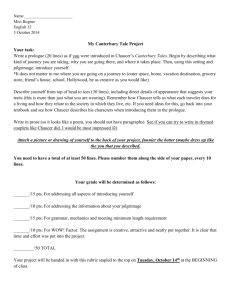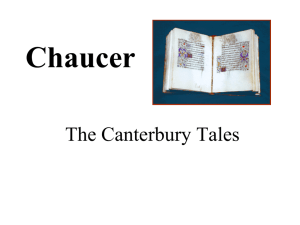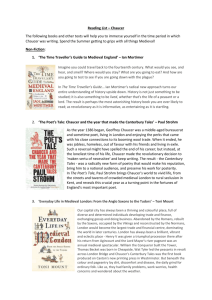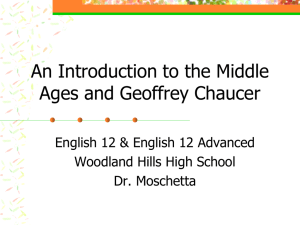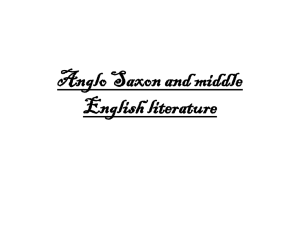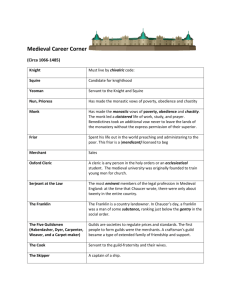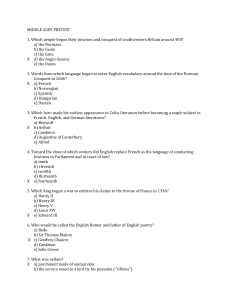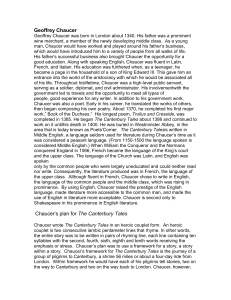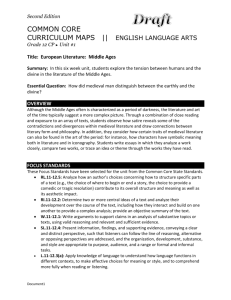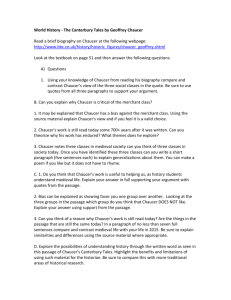Introduction to The Canterbury Tales
advertisement
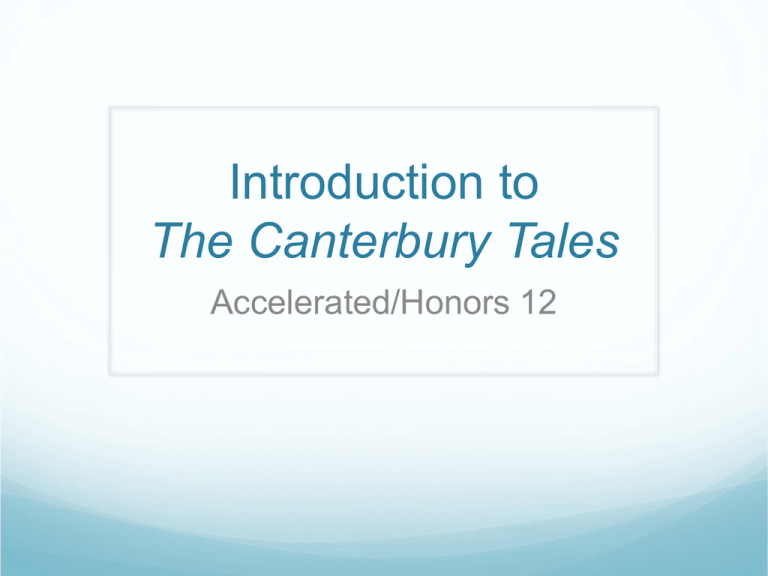
Introduction to The Canterbury Tales Accelerated/Honors 12 Medieval Period 1066-1485 The Norman Conquest of England Stand-still in English literature Medieval Hierarchy Feudal system: Nobility: barons, knights Freemen: emerging middle class (merchants, guildsmen) Peasants or serfs Medieval Hierarchy (cont) Clergy The Roman Catholic Church (people shared a common faith) Pope, archbishops, bishops, priests, nuns, and monks. the Black Pl a gue left holes in socie ty that provided for u pward mobility o it wiped out a thir d of the popula tion o undermined the economic str ucture of the feu d al s ys tem Saint Thomas à Becket Archbishop of Canterbury Feud with Henry II “Will no one rid me of this troublesome priest?” Miracles that led to a great pilgrimage to Canterbury Geoffrey Chaucer C. 1343-1400 Known as “the father of English literature” Middle class Vassal to the king Started a “re-birth” of English literature Geoffrey Chaucer Born in the reign of Edward III his work has a quality of universality that is only matched and exceeded by Shakespeare Chose to write in the Mercian dialect (not French of the court or Latin of the university & church). This dialect became the English dialect spoken today. Father was a successful wine merchant (the middle class was new) Geoffrey Chaucer Born a commoner, but through his intellect and astute judgments of human character, he moved freely among the aristocracy, so he knew the world from many aspects. He became a court page at 12 and read romances to the ladies at court; married a lady-in-waiting to the queen Took part in at least two military campaigns Court poet of the later Middle Ages in Western Europe Geoffrey Chaucer He traveled widely, was a substantial citizen, welleducated, widely read. He was a diplomat in Italy. Met or read forerunners of the Italian Renaissance (Dante, Petrach, Boccaccio) and spoke French, Italian, Latin fluently. He held many public offices; throughout his public life he came into contact with most of the important men of London as well as with many of the great men of the continent Geoffrey Chaucer His work did not reach people through printed books but was recited and circulated in manuscript copies He was the first poet buried in Westminster Abbey “One of the best known parts of Westminster Abbey, Poets' Corner can be found in the South Transept. It was not originally designated as the burial place of writers, playwrights and poets; the first poet to be buried here, Geoffrey Chaucer, was laid to rest in Westminster Abbey because he had been Clerk of Works to the palace of Westminster, not because he had written the Canterbury Tales” (westminster-abbey.org) Literary Devices Frame tale: Narrative technique whereby a main story is composed, at least in part, for the purpose of organizing a set of shorter stories, each of which is a story within a story. Romance Stories of adventure about knights and chivalry Courtly love: Celebrates the love of a knight, usually for a married woman. Thus, it is often adulterous and secretive. Knights are so madly in love with these women that it consumes their thoughts. Knights try to do many great deeds in hopes of winning their love. Fabliaux Audience: middle class men Risqué tales that usually satirize women and clergy Lots of obscenity; people act like animals as opposed to chivalric romance jealous husband who loses sexual possession of his wife wife who outsmarts her husband corrupt members of the church Heroic Couplet Pioneered by Chaucer Poems constructed from a sequence of rhyming pairs of iambic pentameter lines The General Prologue Middle English http://www.youtube.com/watch?v=QE0MtENfOMU

